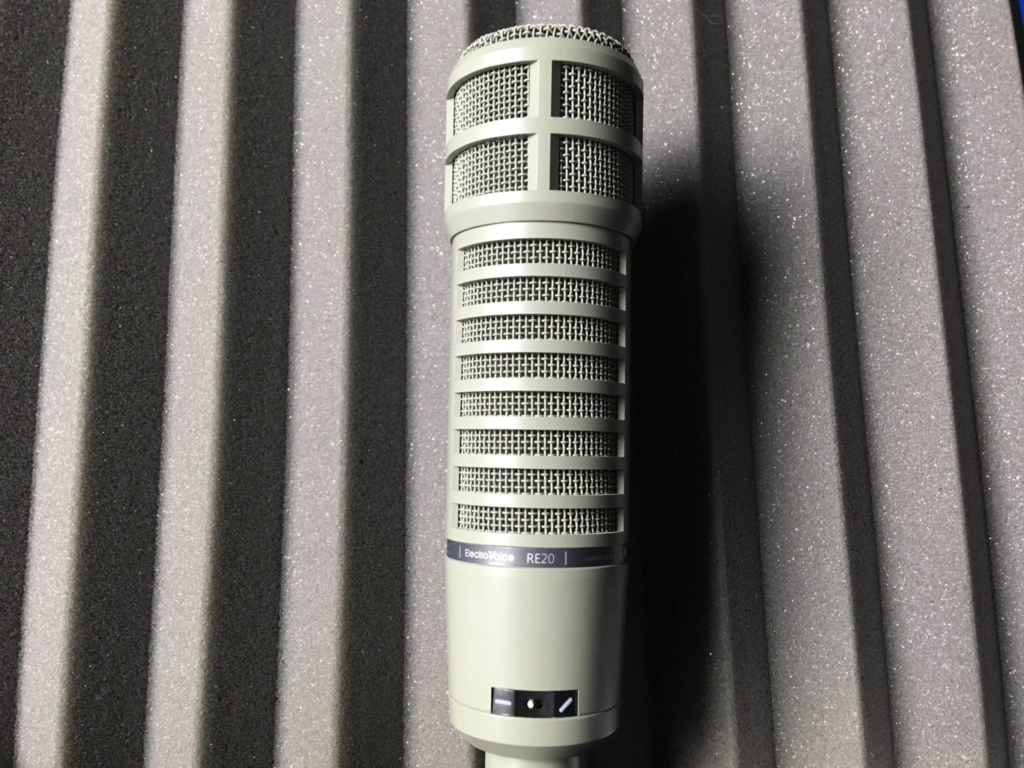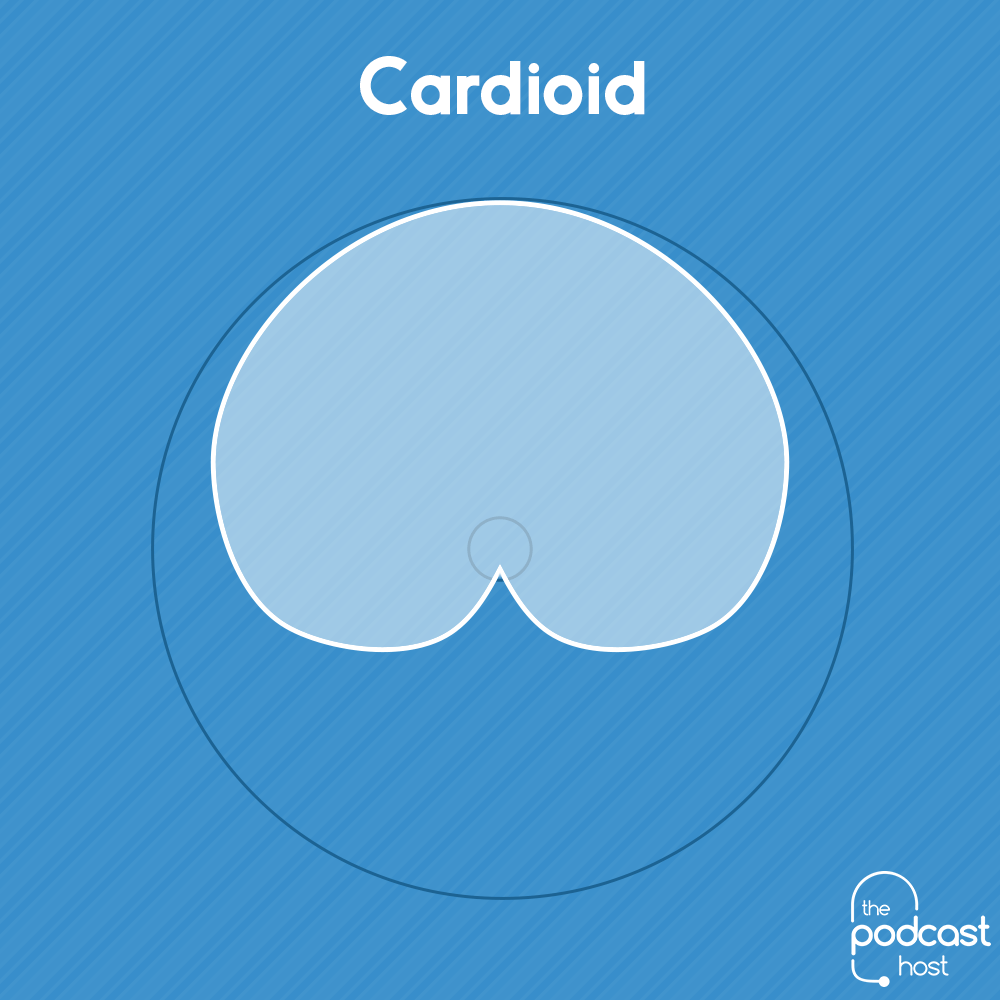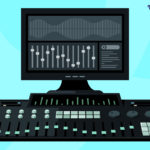Electro-Voice RE20 Review | A Premium Mic for Podcasting & Voice-Over
The Electro-Voice RE20 is a high-end vocal microphone.
So, how does it work, how does it sound, how much does it cost, and who is it best suited to? That’s the purpose of this review, so let’s dive in and find out…
What is the Electro-Voice RE20?
The RE20 is a premium dynamic microphone, optimised to record voice. That could be anything from voice-over work, to singing, or, in our case, podcasting.

Dynamic & Condenser Mics
When we talk about ‘dynamic’ or ‘condenser’ mics, these two terms refer to a mic’s build, and a mic’s function. How a mic is built, and how it functions.
It’s commonly said that condenser mics can offer better, more nuanced vocal recordings. However, their over-sensitivity can be a curse in the wrong environment. They also tend to be more fragile, and require a power source known as ‘Phantom Power’ to work.
Typically, a dynamic mic is the opposite of the above. They’ll have slightly less nuance in the recording, but can perform better in less-optimal environments. They also tend to be more durable, and they don’t need Phantom Power to work.
Because dynamic mics are powered directly from whatever they’re plugged in to (a mixer or digital recorder, for example), they can have an increased level of ‘noise’ underneath the recording. This can manifest as a slight hiss, hum, or buzz. It’s basically just the sound of the equipment working together.
These descriptions are pretty stereotypical, and are very model-dependent. A mid to high-range dynamic mic will blow a cheap condenser mic out the water, when it comes to recording vocals. Hopefully this is enough to give you a bit of background info on those fronts.
Mic Quality
The Electro-Voice RE20 is one such mic that bucks the trend of these stereotypical ‘dynamic vs condenser’ definitions.
Actually, it offers one of the most nuanced vocal recordings I’ve heard on any mic, whilst retaining all the traditional benefits of a dynamic model.
This is due to a number of factors, including a wide frequency range (it can “hear” more), and an excellent transient response (the way it responds to changes in whatever it’s recording).

It has a Cardioid polar pattern. This design rejects unwanted sounds from around the mic. It focuses on the voice in front of it. Yet, it’s also pretty forgiving if you move around quite a bit whilst talking. Remaining on-mic is easy.
Mic Build
The Electro-Voice RE20 minimises pops and sibilance in the spoken word, even at close range. Further protection against distortion of this type is available too, with a low-cut filter button on the mic.
It can handle high sound pressure levels that can easily cause distortion and overload to condenser mics working with Phantom Power.
The steel casing gives it a weighty and durable feeling.
Worth noting too, the RE20 is an XLR mic. This means you do need a mixer, interface, or digital recorder. It won’t plug directly into your computer like a USB mic.
Electro-Voice state that the mic will “continue to function flawlessly in high humidity and elevated temperatures that would seriously degrade competitive condenser microphones”. I’m not going to put that to the test though, and before you start planning that “live from the shower” podcast, check out the Cost section, below…
Cost
Whether you’re paying in pounds or dollars, if you buy an Electro-Voice RE20 new on Amazon, you’re pretty much hitting the 400 mark. And as I’ve mentioned above, you do need additional equipment to use it.
This mic was never intended to be a beginner mic. You don’t need to fork out anywhere near $400 for your entire podcasting equipment setup. The RE20 is clearly designed for podcasters who’ve been in the game for a while now, are fully invested, and are looking to really take their audio to the next level.
Sound Quality
Here’s a sound sample of the Electro-Voice RE20 with no cleaning or post-processing applied. You’ll hear it working through the Focusrite Scarlett 2i2 and the Yamaha MG10. The podcast episode sample was from PodCraft.
Summary
Overall, this mic is genuinely one of the best I’ve ever used. It’s hard to pick a single fault with it.
But here’s the bottom line. Most podcasters don’t need an amazing microphone, they just need a good one – and there’s plenty of those on the market.
This mic will set you back $400. If you’ve been creating audio for a while now, have the budget, and are creating highly-produced content, or are simply looking for the icing on the cake to your vocal recordings, then definitely consider the Electro-Voice RE20.
If you’re just starting out though, then something like the Samson Q2U is a great option instead.
The most important thing, as ever, is your content. That’s ultimately what’s going to determine the quality and impact of your podcast.
And, if you’d like help with that, or choosing your equipment, then join us in Podcraft Academy for live Q&A sessions, video tutorials, a community forum, and loads of downloadable checklists and resources. It’d be great to work with you in there!

